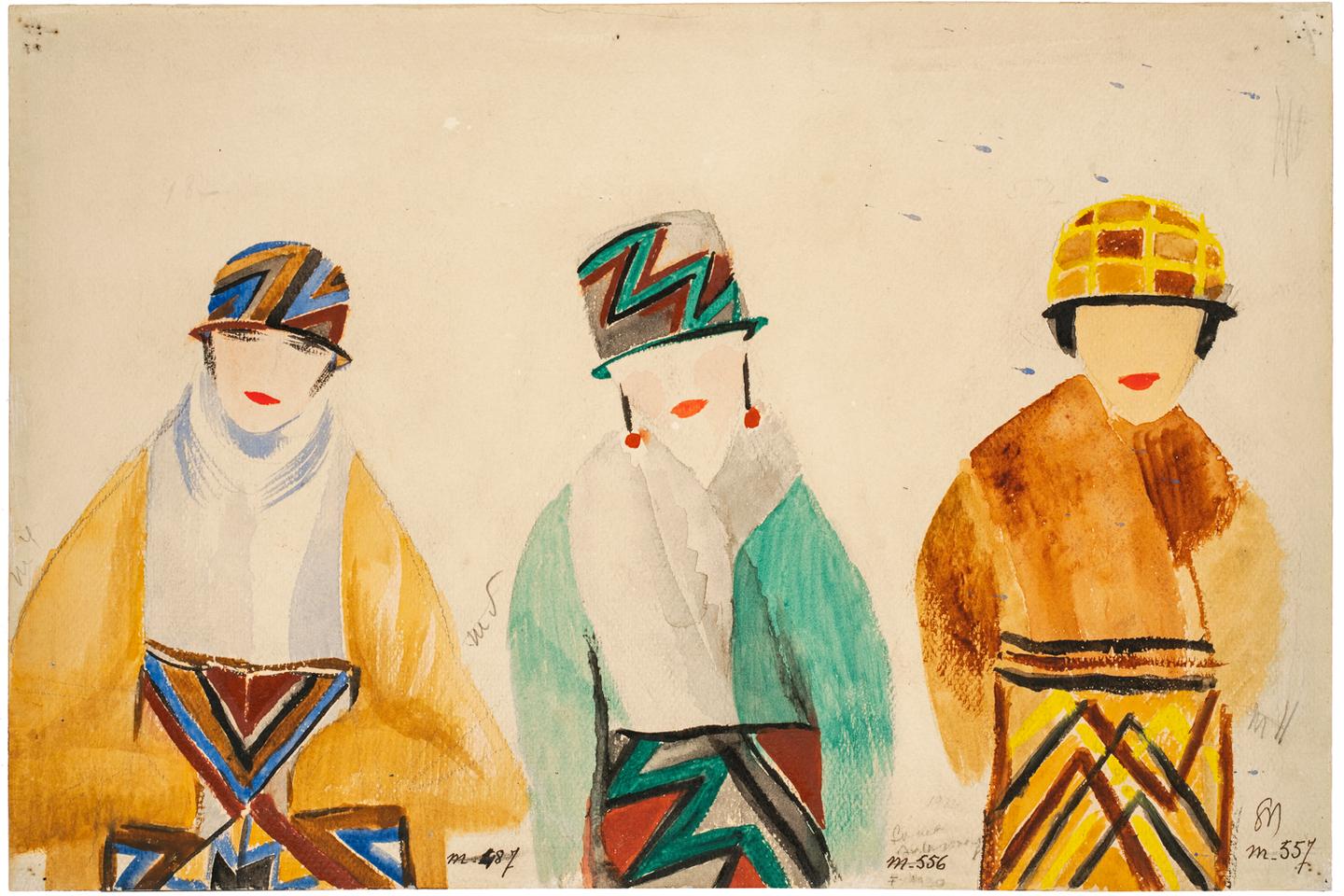Fashion
Sonia Delaunay’s fashion years

At the end of July 1925, Paris hosted the International Exhibition of Modern Decorative and Industrial Arts. For the event, the Pont Alexandre-III bridge was transformed into the Rue des Boutiques, teeming with visitors. The storefront at number 16 was a real eye-catcher, with its large, curving Art Deco letters reading: “Sonia Delaunay. Simultané,” meaning simultaneous. Its window displayed a highly colorful array of handbags, scarves, furs and a hat. The woman who designed and hand-embroidered them welcomed customers from all over the world to the back of this last-century pop-up store. Sometimes she disappeared to help models change into the dresses she had created and accompany them to the fashion show held outside.
Ninety-nine years before Thomas Jolly imagined the opening ceremony of the Olympic Games, and 98 years before Pharrell Williams privatized the Pont-Neuf for the Louis Vuitton show, Delaunay transformed the Pont Alexandre-III into a catwalk. The world discovered her talents as a stylist. Always ahead of her time, this multi-facetted artist, to whom the Roger-Viollet and Zlotowski galleries are paying tribute in Paris until November 16, made her own mark on the history of fashion in that vibrant era of the Roaring Twenties, which saw the rise of Jeanne Lanvin, Gabrielle Chanel and Madeleine Vionnet soar.
Delaunay, a young mother and painter already renowned for her work, ventured into fashion by chance, a line of work rather frowned upon by the art world. In 1911, she created a cradle cover, made from several pieces of fabric, for her son Charles. “I made it for fun, and to my taste,” she recalled in Patrick Raynaud’s 1972 documentary Sonia Delaunay, prises de vues pour une monographie (“Sonia Delaunay, shots for a monography,” 1972), with her accent and the rocky “r” she brought from Ukraine, where she was born in 1885.

This textile patchwork inspired by Ukrainian craft traditions was to be the starting point for her so-called “simultaneous” dresses. “I know that each color has a life of its own,” she said, explaining “simultaneism,” the Delaunay couple’s invention exploring the interaction of colors. In the 1968 French TV show Quatre Temps, she told the singer Jacques Dutronc, who interviewed her, “I made my first dress in 1913, with the tailor’s samples my husband brought home.”
The dress she wore that pre-war year at the Bal Bullier, a legendary dance hall on the Left Bank, where she turned up every Thursday to dance the tango with “the Delaunay gang,” made up of her husband, the painter Robert Delaunay, and his poet friends Blaise Cendrars, René Crevel and Guillaume Apollinaire. “Apollinaire, I liked to see him eat. He was as good at it as he was at poetry,” she told Dutronc, 55 years later. As a sign of affection, Delaunay dressed her band of poets: a vest for René Crevel, a scarf and pajamas for Tristan Tzara.
You have 69.01% of this article left to read. The rest is for subscribers only.








